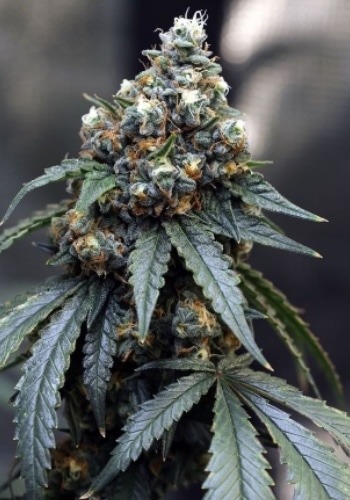The ocimene family refers to a group of monoterpenes abundant in a variety of plants and fruits, which include: two stereoisomeric forms of β-ocimene (cis-β-ocimene and trans-β-ocimene, differing in the position of the isolated double bond) and α-ocimene with such bond in the terminal position. Compounds such as (E, E)-2,6-Allo Ocimene, (E, Z)-Allo Ocimene, α- and β-myrcene are also considered as ocimene isomers.
Ocimene may derive from two main routes:
1) From α-pinene by pyrolysis (a reaction consisting of a thermal rearrangement);
2) From linalool by dehydration (a reaction which implies the loss or removal of a water molecule).
The flavour and aroma profile of Ocimene
Ocimene is found naturally in the essential oils of a variety of plants, both as isolated “pure” compounds and as a mix of the various forms. Both pure and mixed Ocimene is characterized by an intense aromatic (but slightly tenacious) woody and almost floral scent, with herbal and citrus undertones, which in pure Ocimene’s essential oils resemble that of neroli oil. When tasted, ocimene essential oil emanates a herbal and tropical flavour with floral nuances.
Ocimene occurs in essential oils of basil, bergamot, bigarade, hops, kumquats, lavender, mango, mint, neroli, parsley, pepper and petitgrain.
The differences between α-Ocimene and β-Ocimene
α-Ocimene is abundant in green vegetables and Curcuma. Its scent is a mix of fruity and floral nuances with a slight musty undertone, resembling that of wet clothes. α-Ocimene is responsible for the typical unripe mango odour and of ginger rhizome.
According to a 2004 study, the essential oil Artemisia Dracunculus L. (Asteraceae) containing a high amount of alpha-trans-ocimene (20.6%) has revealed anticonvulsant and sedative effects in models of experimental seizures.
β-Ocimenes are some of the most common monoterpenes found in nature, released in large amounts from the leaves and flowers of many plant species. The “trans” (E) form is more common and more abundantly emitted in floral scents than the “cis” (Z) one, for this reason, data from literature are mainly referred to the trans(E)-β-ocimene isomer.
β-Ocimenes are acyclic monoterpenes similar to myrcene and as this latter, derived from a common ancestor known as Geranyl Diphosphate. Myrcene and Ocimene are not arranged in ring structures: they are acyclic. However, many monoterpenes link up to form rings or cyclic structures, for example in limonene. Both myrcene and β-ocimene’s emission follows the diurnal-nocturnal (circadian) rhythm and is regulated by the developmental stage of plants.
Together with its cousin myrcene, β-ocimene is highly abundant in Snapdragon (Antirrhinum majus) flowers, both representing the total monoterpene volatile fraction of its floral scent bouquet.
Ocimene as an attractor of pollinators
But the role of Ocimene goes far beyond that of a simple odorous molecule. In essence, it seems to be linked with the “pollinator syndromes”, the property of some flowers to be appealing to a particular type of pollinator vectors (from wind and water to birds and bees) suggesting a potential role of Ocimene in the attraction of pollinators to flowers. This compound is also a highly volatile pheromone, which acts by intervening in the delicate social regulation of honeybee colonies. In a colony, a complex system of chemicals (pheromones) is produced by the larvae to control and adapt the behaviour, and the physiology of workers as well as partially inhibit the ovary development in worker bees. Due to its highly volatile nature, Ocimene is emitted by the brood and easily dispersed within the colony.
Industrial uses for Ocimene
The effect that Ocimenes have on honey bees has prompted both the cannabis industry to create honey made from cannabis plants by training honeybees to collect sugar from cannabis resin instead of other flowers. In 2015, a plan was proposed by the American federal police to replace sniffer dogs with trained honey bees to detect illicit substances. Ocimene has also been investigated as a renewable source of biofuels, due to their high energy density and compatible physical properties.
Medicinal properties of Ocimenes
The essential oils of containing Ocimene (specifically β-ocimene) are linked with a variety of healing properties:
- According to some studies, Ocimene have shown antifungal and pest-resistance activity.
- Ocimene have also shown antitumor properties in melanoma.
- According to a 2013 study, Ocimene, together with other constituents of black pepper’s essential oil, have revealed both antioxidant properties and an inhibitory action against the key enzymes involved in type 2 diabetes, thus suggesting a potential role in the management and/or prevention of type-2 diabetes and hypertension (high blood pressure).
- Analysis has revealed that the chemical constituents of Citrus flower’s essential oils (of which Ocimene is one of the main ingredients) have revealed anti-inflammatory properties, in particular in suppressing the production of several compounds involved in the inflammatory process (cytokines).


